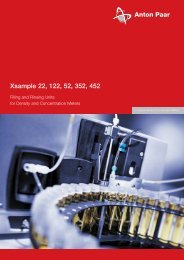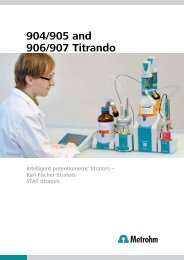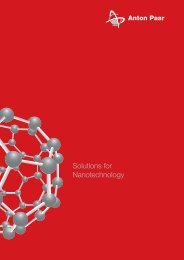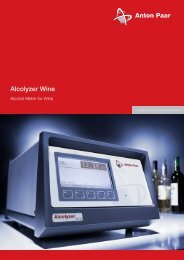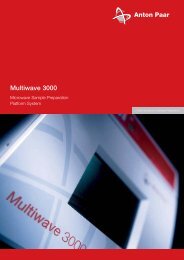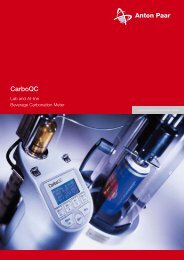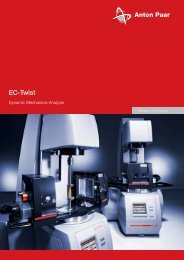The Fundamentals of AAS - MEP Instruments
The Fundamentals of AAS - MEP Instruments
The Fundamentals of AAS - MEP Instruments
- No tags were found...
Create successful ePaper yourself
Turn your PDF publications into a flip-book with our unique Google optimized e-Paper software.
2.2.4 <strong>The</strong> detector in HR-CS <strong>AAS</strong>In HR-CS <strong>AAS</strong> a linear CCD array with typically 512 pixels (picture elements) is used as thedetector, 200 <strong>of</strong> which are used for analytical purposes. Each individual pixel is evaluatedindependently, so that the equipment basically works with 200 independent detectors. All the 200pixels are illuminated simultaneously (for 1-10 ms) and read out simultaneously. <strong>The</strong> nextillumination is already being carried out during signal evaluation, making possible a very rapidmeasurement frequency. Fig. 2-20 is an example <strong>of</strong> typical detector readout, where the measuredvalue for each pixel in the environment <strong>of</strong> the analytical line for sodium at 330.237 nm is shown.<strong>The</strong> absorption line is essentially covered by three pixels, while the other pixels only exhibit thestatistical variation <strong>of</strong> the baseline, i.e. the noise.Fig. 2-20: Readout <strong>of</strong> the integrated absorbance measured by each individual pixel in the environment <strong>of</strong> the analytical line <strong>of</strong> Na 330.237 nmAs only three pixels are used in most cases to measure atomic absorption, the others may be usedfor correction purposes. As all pixels are illuminated and read out simultaneously, any variation <strong>of</strong>the intensity that is independent on wavelength, such as variations in lamp emission, can bedetected and eliminated through the use <strong>of</strong> correction pixels. This results in an extremely stablesystem with low noise level and significantly improved signal-to-noise ratios. <strong>The</strong> same correctionsystem also eliminates any continuous (over wavelength) background absorption, as will bediscussed in a later section.Another decisive advantage <strong>of</strong> this measurement principle with 200 detectors is that the entireenvironment <strong>of</strong> the analytical line becomes ‘visible’ at high resolution. This way it is possible forexample to recognize and avoid spectral interferences much more easily.<strong>Fundamentals</strong> , Instrumentation and Techniques <strong>of</strong> Atomic Absorption Spectrometry 22/ 65Analytik Jena AG | Konrad-Zuse-Straße 1 | 07745 Jena / Germany | info@analytik-jena.com | www.analytik-jena.com




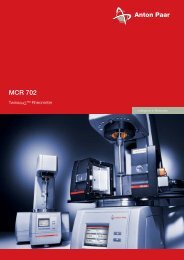
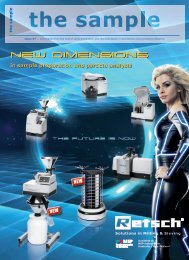
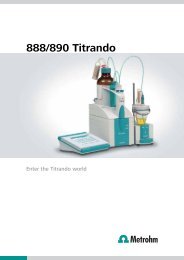
![Rice, size measurement of broken grains [pdf] - MEP Instruments](https://img.yumpu.com/46724497/1/184x260/rice-size-measurement-of-broken-grains-pdf-mep-instruments.jpg?quality=85)
